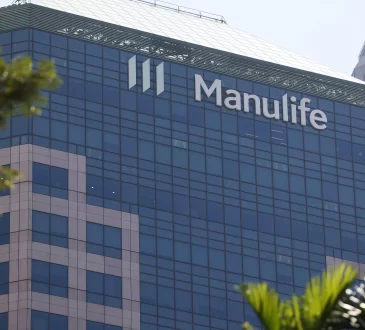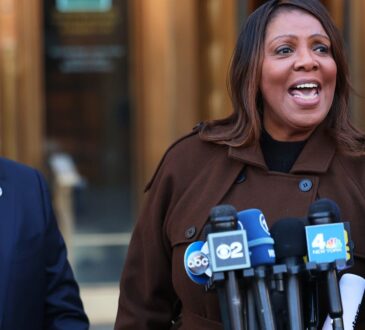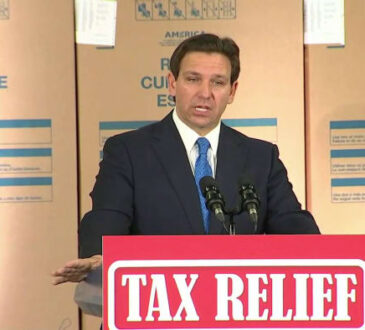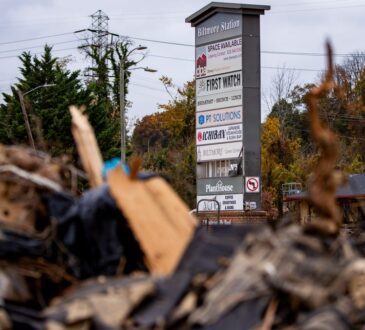Brace yourself.
Home insurance rates are expected, on average, to increase 6 percent in 2024 but could jump as high as 23 percent in states with severe weather, according to a home insurance projection report from Insurify.
That’s making 30 percent of Americans nervous.
With Florida property owners already paying more than four times the national average for home insurance, there is good reason to be nervous.
Early forecasts for a hyperactive 2024 Atlantic hurricane season could bring even more rate increases in 2025, something no Florida residents wants to hear. AccuWeather is predicting an “explosive” hurricane season that has the potential to break the all-time record of 30 named storms in a season.
Is record 2024 hurricane season ahead?AccuWeather predicts ‘explosive’ 2024 hurricane season that could break record
“A ‘hurricane season from hell’ could pile crisis upon crisis,” said Betsy Stella, vice president of carrier management and operations at Insurify, America’s highest-rated digital insurance agent and comparison platform.
“The financial solvency of all insurance companies will be tested. Perhaps especially newer providers who have stepped into the market recently. Citizens (Florida’s insurer of last resort), too will be tested.”
Here’s a look at home insurance prices in Florida and the U.S. and what is projected to come.
National average for home insurance compared to Florida average rate
While home insurance rates increased 19.8% between 2021 and 2023, America’s average rate of $2,377 was still far below the average rate of $10,996 paid by Florida homeowners.
- U.S. average insurance: $2,377
- Florida average insurance: $10,996
Florida home insurance rates highest in US, and expected to climb higher
By the numbers: here’s what you should know about Florida homeowners insurance:
- Florida homeowners pay the most for home insurance, with an average annual rate of $10,996 in 2023.
- Insurify predicted costs will go up another 7% in 2024 to $11,759.
- Six of the 10 most expensive cities in the U.S. for homeowners insurance are in Florida.
- Sixty percent of homeowners don’t carry separate flood insurance, and 13% erroneously believed their standard policy included it.
Top 10 US cities with most expensive homeowners insurance in 2024; top 6 are in Florida
Six of the 10 most expensive cities for homeowners insurance in the U.S. are along the coast in South Florida, and all have average annual rates above $11,000, Insurify said.
- Hialeah, average premium, $17,606
- Miami, average premium, $16,717
- Fort Lauderdale, average premium, $15,484
- Hollywood, average premium, $13,834
- West Palm Beach, average premium, $13,123
- Port St. Lucie, average premium, $11,897
- Kenner, Louisiana, average premium, $10,204
- New Orleans, average premium, $9,780
- Ocean Springs, Mississippi, average premium, $9,428
- Thibodaux, Louisiana, average premium, $7,763
Homeowners insurance: Top 10 states in the US
The states with the highest home insurance costs are prone to severe weather.
Florida, Louisiana, Texas, Arkansas and Mississippi are vulnerable to hurricanes, said Insurify. Texas, Colorado and Nebraska face a growing wildfire risk. Nebraska, Texas and Kansas are at high risk for tornadoes.
Texas, with an average homeowners rate of $4,456, faces all three weather threats but still has a rate that’s less than half paid by Florida residents.
- Florida: $10,996
- Louisiana: $6,354
- Oklahoma: $5,444
- Texas: $4,456
- Mississippi: $4,312
- Colorado: $4,072
- Nebraska: $3,962
- Alabama: $3,939
- Kansas: $3,437
- Arkansas: $3,368
Vermont homeowners pay the least in the U.S.: $918.
How much are insurance rates expected to increase in 2024?
Insurify estimated insurance costs in the top 10 states could see the following rates by the end of 2024:
- Florida: $10,996, projected $11,759
- Louisiana: $6,354, projected $7,809
- Oklahoma: $5,444, projected $5,711
- Texas: $4,456, projected $4,437 (yes, a decrease)
- Mississippi: $4,312, projected $4,482
- Colorado: $4,072, projected $4,367
- Nebraska: $3,962, projected $4,292
- Alabama: $3,939, projected $4,281
- Kansas: $3,437, projected $3,666
- Arkansas: $3,368, projected $3,662
Florida’s insurance crisis and reinsurance
More than a dozen home insurance companies have declared insolvency since 2019. Farmers Insurance stopped covering Florida and major insurers have not renewed policies for high-risk homes.
When insurers can’t cover the cost of natural disasters, reinsurance steps in. Reinsurance essentially is insurance for insurers and is “a significant factor in the Florida home insurance crisis,” Insurify said.
“Reinsurance coverage has become difficult to secure in Florida, and reinsurance rates have skyrocketed,” Stella said.
Adding to the high insurance rates in the state are insurance fraud and legal system abuse.
Florida residents make 9% of all homeowners insurance claims in the U.S. but account for 79% of lawsuits over claims filed, according to the Florida Office of Insurance Regulation.
The Florida Legislature has tried to tackle the insurance problems in the state, including Senate Bill 7052 to increase consumer protections and other proposals to tie home insurance balances to unpaid mortgages, allowing homeowners to buy insurance policies that match the unpaid mortgage principal rather than the home’s replacement value.
What about Citizens Property Insurance Corp.? Isn’t that the answer to Florida’s insurance crisis?
State-run Citizens Property Insurance Corp. is the largest insurer in Florida. Data from S&P Global shows Citizens grew over 65% in a single year as more and more Florida homeowners found themselves unable to buy policies elsewhere.
“Citizens used to be the insurance company of last resort,” said Désirée Ávila.
“There are so few insurance companies that insure in Florida, and they have so many requirements, that when they do, it almost makes the cost of having them as your insurer insane.”
Citizens Insurance:More homeowners are being dropped by Citizens insurance. Will it be you? What to know
In March 2024, Citizens announced it will begin shedding plans.
Created as an insurer of last resort, Citizens in recent years has outpaced every other provider in Florida when customers found themselves dropped from their insurance companies or completely priced out.
Citizens can drop policyholders who find comparable coverage from a private insurer as long as the new premium isn’t more than 20% than renewing with Citizens.
Another proposal would have Citizens cover hurricane damages instead of private, for-profit insurers. Citizens president and CEO Tim Cerio warned taking on Florida’s hurricane risk could make it challenging to acquire reinsurance.
“Legislators are supposed to protect the consumer, but where are they”? said Ávila. “I kind of feel like they’re not doing anything, and it’s just making it prohibitive to live here.”
How can homeowners prepare for uncertain future?
Twenty-one percent of homeowners say they can’t afford their current mortgage rate for long, and 9 percent say they can’t afford it now. Rising insurance costs add to the burden, Insurify said.
So what can homeowners do?
- Plan for potential damage by doing some research and taking steps to protect your home. Some insurers offer discounts for home upgrades.
- Check flood and wildlife zone maps from FEMA and the National Weather Service.
- Install impact windows or hurricane shutters.
- Follow the IBHS-recommended fortified roof standard, which prevents damage from high winds, hurricanes, hail, severe thunderstorms and even tornadoes up to EF-2.
What is Florida Legislature, DeSantis doing about climbing insurance rates?
Florida lawmakers have stepped in repeatedly over the past years to attract more private carriers to the state known for its costly storms. Reforms were driven by arguments that costly litigation was driving up rates.
“No company in the world has enough cash to cover Florida storms,” said Michael Mailliard, owner of MIC Insurance on Longboat Key. “So, these companies are buying reinsurance to fully reinsure their wind risk,”
In 2023 there was a $50 billion hole in the reinsurance market in Florida. This resulted in companies raising rates and searching for the least risky properties to insure.
During two special sessions in 2023, the Republican-controlled Legislature steered $3 billion in taxpayer money into reinsurance accounts the industry could tap.
But Mailliard a $3 billion increase in reinsurance doesn’t spread far when there’s a $50 billion hole.
Lawmakers also have added new barriers preventing customers from suing their insurance companies when unsatisfied with claim outcomes.
Also in 2023, Republican leaders in the Legislature approved and Gov. Ron DeSantis signed an insurer accountability bill that would increase fines for poor claims-handling by companies and add some consumer safeguards.
At the end of the 2024 legislative session, House Speaker Paul Renner, R-Palm Coast acknowledged some issues — like runaway property insurance costs — “are like steering a large ship” and will take time to yield results.Among the tax breaks approved by legislators was an insurance premium tax savings that would save homeowners about $60, up to $75 for those who also have flood coverage.
Industry officials said for most homeowners, the $60 savings are certain to be overtaken by the size of the premium hikes they face this year.
A property insurance overhaul bill in 20222 was signed into law but it was aimed more at keeping insurance companies from leaving by adding legal protections and forcing policyholders in the state-backed Citizens Property Insurance Corp. to take private insurance if they got an offer less than 20% higher when they went to renew.
The bill also added mandatory (and costly) flood insurance to all Citizens’ policies whether they lived in a flood zone or not. It did provide for rebates for residents hit hard by recent storms, but did nothing to address rising costs.





